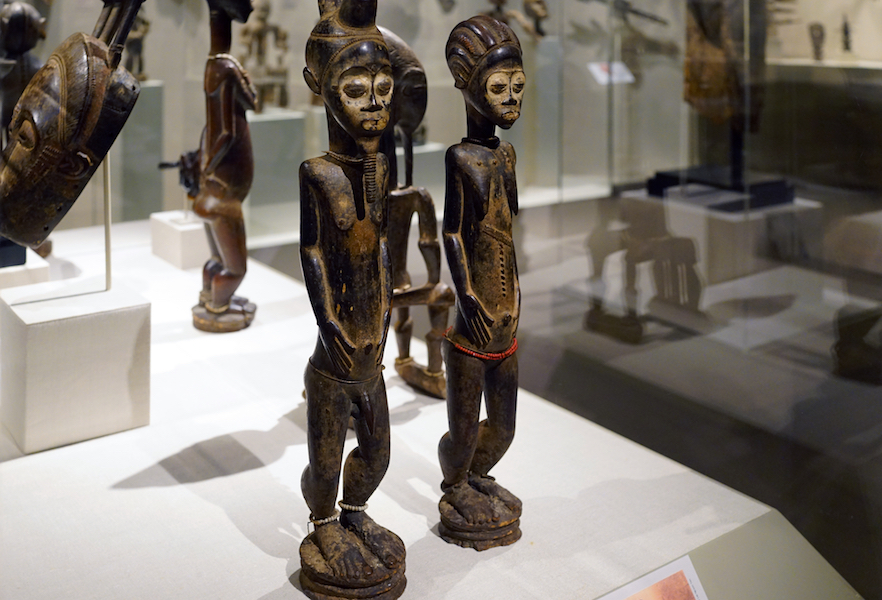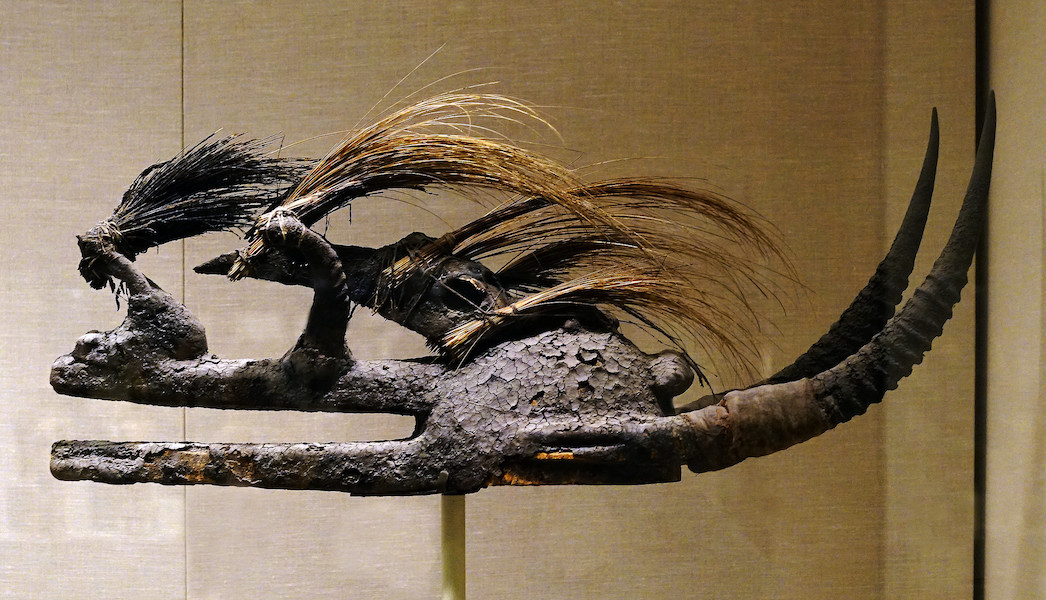
Pair of Diviner’s Figures, Côte d’Ivoire, central Côte d’Ivoire, Baule peoples, wood, pigment, beads and iron, 55.4 x 10.2 x 10.5 cm (The Metropolitan Museum of Art)
The Role of Visual Expression in Africa
Because many tradition-based African artifacts serve a specific function, Westerners sometimes have not regarded them as art. We need to recognize, however, that the concept of “art for art’s sake” is a relatively recent invention of the Western world. Prior to the Renaissance, most art traditions around the world were considered functional as well as aesthetic. The objects African artists create, while useful, also embody aesthetic preferences and may be admired for their form and composition.
Aesthetics

Male face (detail), Pair of Diviner’s Figures, Côte d’Ivoire, central Côte d’Ivoire, Baule peoples, wood, pigment, beads and iron, 55.4 x 10.2 x 10.5 cm (The Metropolitan Museum of Art)
Artists and patrons in many African societies express well-defined aesthetic preferences and value skillful work. Studies of aesthetics in some African societies have led to the identification of certain artistic criteria for evaluating visual arts. Among the Baule in Côte d’Ivoire, for example, a sculpture of the human figure should emphasize a strong muscular body, refined facial features, and elaborate hairstyle and scarification patterns, all of which reflect cultural ideals of civilized beauty (above and detail left). Scholars of aesthetics in Yoruba (Nigeria) visual expression have identified criteria based on both formal elements, such as a smooth surface, symmetrical composition, and a moderate resemblance to the subject, as well as abstract cultural concepts, such as ase (inner power or life force) and iwa (character or essential nature). Many African societies associate such smooth, finished surfaces with cultivated refinement.
African aesthetics generally have an ethical or religious basis. An artwork considered “beautiful” is often also believed to be “good,” in the sense that it exemplifies and upholds moral values. The fact that, in many societies, the words for beautiful and good are the same suggests a strong correspondence between these two ideas. The ability of an artifact to work effectively, whether that means connecting with the spiritual realm or imparting a lesson to initiates, may also be a standard for determining the “beauty” of an artifact.

Kòmò Helmet Mask (Kòmòkun), 19th–mid-20th century, Guinea or Mali or Burkina Faso or Côte d’Ivoire, West Africa, Komo or Koma Power Association, Wood, bird skull, porcupine quills, horns, cotton, sacrificial materials, 35.2 x 22.1 x 85.6 cm (The Metropolitan Museum of Art)
Although in the Western world, aesthetics is often equated with beauty, artists in some African cultures create works that are not intended to be beautiful. Such works are deliberately horrific in order to convey their fearsome powers and thereby elicit a strong reaction in the viewer (above).
© 2006 The Metropolitan Museum of Art, New York (by permission)

